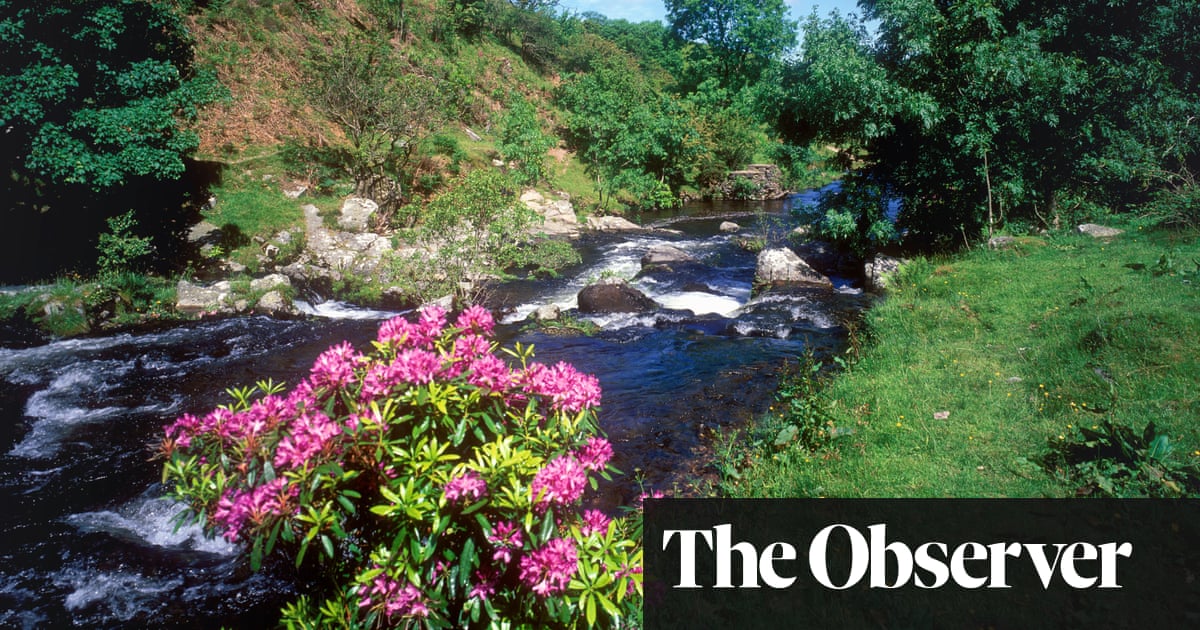
It will take 250 years to eradicate rhododendron from England at the current rate of removal, according to new figures, despite the invasive woodland shrub posing “a mortal threat” to Britain’s temperate rainforest, campaigners warn.
Rhododendron, introduced from Asia and widely planted by the Victorians, covers at least 37,600 hectares (93,000 acres) in England, much of it in the west of the country, which is also home to the remaining fragments of temperate rainforest.
The government pays landowners between £2,800 and £4,400 per hectare for removing rhododendron and, since 2015, the Environment Agency and Natural England have had the power to compel landowners to remove the plants.
Parliamentary questions from Green MP Caroline Lucas show that £3.39m was spent on rhododendron control in England between 2015 and 2022 – about £423,845 a year – suggesting a maximum of 151 hectares of rhododendron were cleared annually.
No orders to clear rhododendron have been issued, and the government said it had no plans to ban the sale of the invasive species at garden centres.
At that rate of clearance, it would take a quarter of a millennium to eradicate rhododendron from England, further damaging the remaining 18,870 hectares (46,628 acres) of English temperate rainforest that survive, according to the Lost Rainforests of Britain campaign.
Guy Shrubsole, who leads the organisation, said: “Invasive rhododendron poses a mortal threat to our last remaining fragments of temperate rainforest. It must be eradicated. But the government is utterly failing to do so. Ministers have done nothing to press landowners to act – and funding for rhododendron removal is so inadequate that we’ll be waiting centuries to see it eliminated.
“The government should commission a rainforests strategy for England that addresses threats like invasive species and sets a goal of doubling the area of temperate rainforest within a generation.”
Atlantic temperate rainforest once covered most of the west coasts of Britain and Ireland, thriving in the wet, mild conditions which support rainforest indicator species such as lichens, mosses and liverworts.
Today, it covers less than 1% of land, having been cleared over thousands of years, and is only found in isolated pockets, such as the waterfalls region in the Brecon Beacons and Ausewell Wood on Dartmoor. It could be restored across a fifth of the country, according to analysis by the campaign.
Lucas said temperate rainforests are a critical and undervalued part of the UK’s biodiversity, and invasive rhododendron poses a severe threat to their existence.
“When we’re in a race against time to get the issue under control and protect our natural world, this government is moving at a snail’s pace. Ministers must show greater urgency, with greater funding and greater effort if our precious temperate rainforests are to be restored,” she said.
A Defra spokesperson said: “We are committed to ensuring our irreplaceable ancient trees and woodlands, including those which are temperate rainforest, are adequately protected and suitably managed.
“As part of our ongoing robust biosecurity efforts, we also support non-native invasive species Local Action Groups across England to improve biosecurity and reduce the risk from invasive non-native species – including rhododendron.”
Defra, in partnership with the Scottish and Welsh governments, updated its Non-Native Species Strategy at the end of February. In Scotland, the government is clearing rhododendron as part of efforts to conserve native temperate rainforest. The country’s biodiversity minister, Lorna Slater, called the spread of rhododendron “a major threat to native woodlands including Atlantic Rainforest”.












